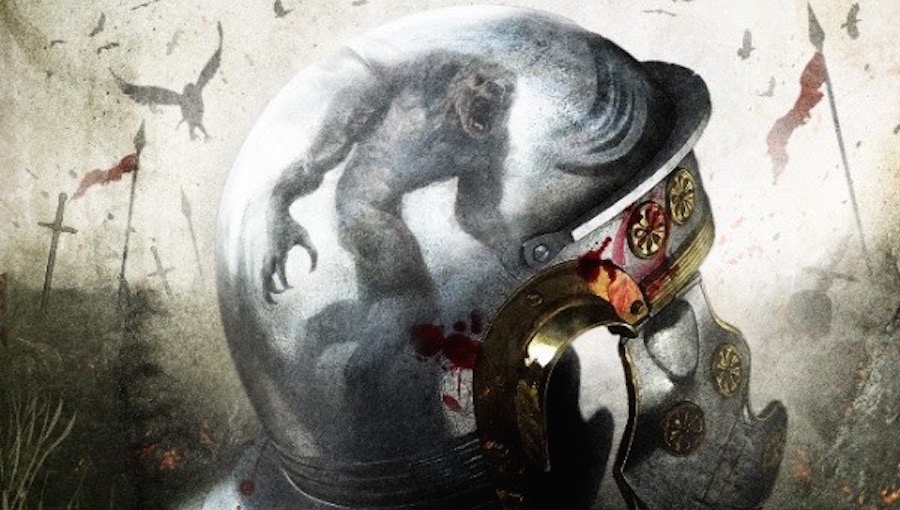Una Salus Victis Nullam Sperare Salutem!
From the stories of Roman conquest, perhaps none stirs the imagination quite as much as that of Legio IX Hispana, the infamous Imperial Roman Ninth Legion that disappeared in Caledonia (Scotland) around 120 AD. Was the legion dissolved? Crushed by the Picts? Met another mysterious fate? Rosemary Sutcliff’s 1954 novel, The Eagle of the Ninth, was one of the first historic epic novels to capitalize on the mystery of the Ninth, while the past few years have seen three films that tell different tales of the Ninth: The Last Legion (2007, Doug Lefler), Centurion (2010, Neil Marshall), and The Eagle (2011, Kevin Macdonald). Eric S. Brown and Steven L. Shrewsbury’s jointly-written neo-peplum novel, Beyond Night, is the newest story to feature the Ninth Legion, though instead of being a purely historic epic affair, it becomes a sword and sandals meets monstrous horror story.
Published by Crystal Lake Publishing in January 2018, Beyond Night sees the Ninth Legion pressing northward into Caledonia to conquest the Picts and expand Rome’s borders; however, Picts become the least of their worries, as swarms of bipedal, muscular, grey-furred beasts that reach twelve feet tall relentlessly attack the Romans.
The central character of the story is Decurion August Arminius, a popular veteran and rising star within the Ninth Roman Legion. He is German, and thus his people had battled the Romans prior, and with their conquest he has folded into the greater Pax Romana. His race does earn him the ire of Quintus, the right-hand man of Maltius, general of the Ninth, but August also keeps his religion, that of Christianity, a secret to himself, making him even more marginalized within the ranks. Other characters within the story also deal with similar issues of identity and being forcibly indoctrinated into the Roman Empire, such as Rufus, August’s Celtic slave boy, and Porcius, an extremely adept warrior who rose through the ranks from slave to gladiator to solider and who identifies himself with ancient Sparta.
Beyond Night can be roughly divided into two halves. The first half sees August and company exploring and fortifying their position in the village of Rutland, where they first encounter the beasts, referred to as Greymen. August and his most trusted and seasoned men set about exploring the caverns beneath Rutland to learn more about the beasts. The latter half of the novel is an all-out, three-way war between the Romans, the Picts, and the Greymen, with the outcome providing an alternative narrative to the fate of the Ninth. The Picts are led by the newly reincarnated Tancorix while the Greymen are commanded by the Druid Drust who has greater plans for all parties involved.
Described by the publisher as “Bigfoot War (another novel by Brown) mixed with Lovecraftian horror on the edge of the Roman Empire,” Beyond Night is extremely light on Lovecraft’s trademark cosmic horror. Fans expecting to see tentacled masses and nihilistic deities may be somewhat disappointed in this marketing description; however, the Greymen in the story do bear some similarities to the ghouls depicted in the artwork described in “Pickman’s Model.” While light on the popular Lovecraft tropes, Beyond Night is brutally graphic and gory. Every arrow puncture and gladius stab unto the Greymen from the Romans and every bone-shattering punch and skull-crunching bite from the Greymen unto the Romans is described in as much lurid detail as possible, with one particular instance having five Greymen each grabbing a limb and head of a Roman and in one fell tug, making him limbless. Anytime the Romans and the Greymen square off (which is often), the descriptions become more and more brutal.
The lack of comedy in Beyond Night makes the narrative stay out of splatstick territory, yet there are a few moments of the story displaying tongue-in-cheek meta-humor. Early in the narrative, as August looks upon the village of Rutland, he ponders to himself, “These were not the savage Picts of the northern territories, but merely domesticated farmers, trying to reach up the ladder to the next level of civilization.” The verbiage here is certainly anachronistic, but more subtly, it’s a reference to the various world-building simulation video games, such as Sid Meier’s Civilization series.
The best way to summarize Beyond Night is to call it the ultimate Neil Marshall film, as it contains core elements of some of his seminal work. The aforementioned Centurion provides the narrative of the Ninth, while his film, The Descent (2005), provides elements of characters facing underground monsters, and Dog Soldiers (2002), sees highly trained military men square off with bipedal beasts (in this case, werewolves). Brown and Shrewsbury’s incorporation of horror elements into the sword and sandal genre is, overall, a success. It’s a formula rarely attempted (Michael Kogge’s comic series, Empire of the Wolf, being one notable example.), but for Beyond Night, it’s a winning combo.
Creative Team: Eric S. Brown and Steven L. Shrewsbury
Publisher: Crystal Lake Publishing
Click here to purchase.
Nicholas Diak is a pop culture scholar of industrial and synthwave music, Italian genre films, peplum films, and H. P. Lovecraft studies. He contributes essays to various anthologies, journals, and pop culture websites. He is the editor of the anthology, The New Peplum: Essays on Sword and Sandal Films and Television Programs Since the 1990s. He can be found at nickdiak.com.

